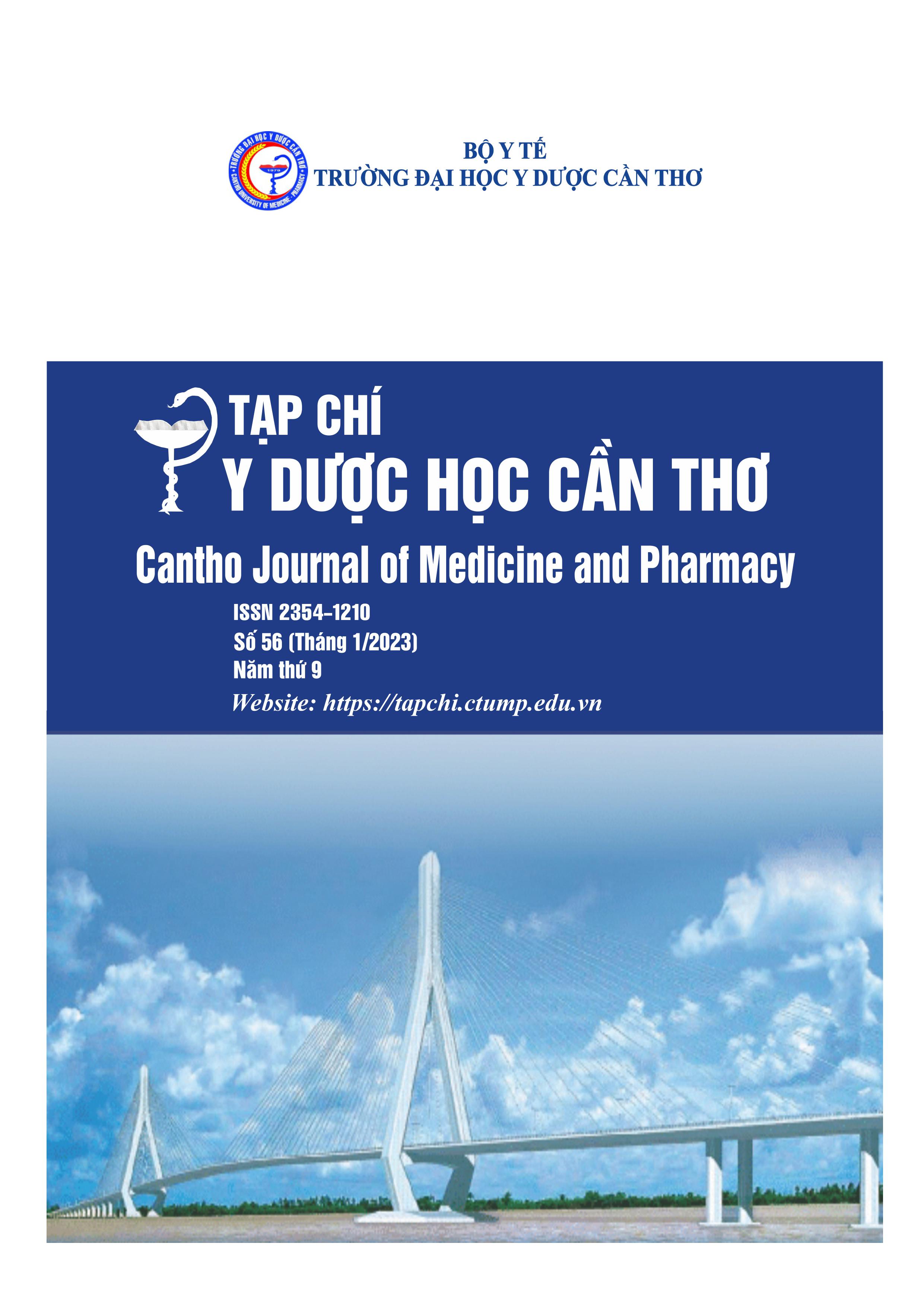SURVEY ON ENDOSCOPIC IMAGES AND HELICOBACTER PYLORI INFECTION STATUS IN PATIENTS WITH GASTRITIS AND PEPTIC ULCER DISEASE AT CAN THO UNIVERSITY OF MEDICINE AND PHARMACY HOSPITAL
Main Article Content
Abstract
Background: According to ICD10, gastritis and peptic ulcer disease are one of the top 5 causes of patients having to go to medical facilities. To diagnose and treat gastritis and peptic ulcer disease, endoscopic techniques and tests for Helicobacter pylori are essential. Objectives: To describe endoscopic imaging in patients with gastritis and peptic ulcer disease according to the Sydney system and to determine the incidence of H. pylori infection in patients with gastritis and peptic ulcer disease. Material and method: The descriptive cross-sectional study was conducted on 116 patients at Can Tho University of Medicine and Pharmacy Hospital. Results: High-frequency symptoms include loss of appetite (95.7%); epigastric abdominal pain (70.7%); flatulence, indigestion (65.5%). Gastritis predominates with 94.0% of patients, the site of lesions was mainly pyloric antrum. According to the Sydney system in patients with H. pylori gastritis, erythematous/ exudative lesions predominated with 67.4%. The proportion of patients with gastritis and peptic ulcer disease caused by H. pylori was 37.1%. Conclusions: Typical endoscopic imaging of patients with peptic ulcer disease according to the Sydney system is erythematous/ exudative at the pyloric antrum. The rate of H. pylori infection is still low, it is necessary to find out the causes of the decrease in the positivity rate of the CLO test to provide good screening solutions for H. pylori infection.
Article Details
Keywords
Gastritis and peptic ulcer disease, H. pylori, Sydney system, CLO test, gram staining
References
2. Châu Ngọc Hoa (2012), Bệnh học nội khoa, Nhà xuất bản Y học, tr. 247-258.
3. Nguyễn Thị Mỹ Lệ, Nguyễn Đình Tuyến (2022), Đặc điểm lâm sàng, cận lâm sàng bệnh viêm loét dạ dày tá tràng ở trẻ em điều trị tại bệnh viện Sản-Nhi tỉnh Quảng Ngãi, Tạp chí Y học Việt Nam. tr. 514(1).
4. Trần Thị Như Lê, Nguyễn Vũ Trung, Trần Ngọc Ánh và cộng sự (2022), Đột biến kháng levofloxacin trên gen gyrA, gyrB của Helicobacter pylori trên bệnh nhân viêm loét dạ dày tá tràng, Tạp chí Nghiên cứu Y học. 150(2), tr. 69-77.
5. Trương Minh Sáng, Nguyễn Duy Thắng, Nguyễn Bá Vượng (2019), Hình ảnh nội soi và mối liên quan với SOD, GPx, MDA, trạng thái chống oxy hóa toàn phần (TAS) ở bệnh nhân viêm dạ dày mạn, Journal of 108-Clinical Medicine and Pharmarcy.
6. Lê Quang Tâm (2012), Viêm loét dạ dày tá tràng và nhiễm Helicobacter pylori ở bệnh nhân dân tộc Ê Đê tại bệnh viện tỉnh Đăk Lăk, Tạp chí Y Học TP. Hồ Chí Minh. 16, tr. 58-67.
7. Đào Thanh, Trần Đỗ Hùng, Trần Thị Như Lê và cộng sự (2021), Khảo sát mối liên quan giữa Genotype và tình trạng kháng Clarithromycin của Helicobacter pylori ở bệnh nhân viêm loét dạ dày tá tràng, Tạp chí Y học Việt Nam. tr. 507(2).
8. Nguyễn Cẩm Tú (2011), Viêm loét dạ dày tá tràng do Helicobacter pylori ở trẻ em: đặc điểm lâm sàng, nội soi và hiệu quả tiệt khuẩn của phác đồ OAC, Tạp chí Y Học TP. Hồ Chí Minh. 15, tr. 294 - 301.
9. Michael F Dixon, M. Genta, J. H. Yardley and et al. (1996), Classification and grading of gastritis: the updated Sydney system, The American journal of surgical pathology. 20(10), pp. 1161-1181.
10. Manxhuka-Kerliu Suzana, T. Skender, D. Emin and et al. (2009), Helicobacter pylori gastritis updated Sydney classification applied in our material, Sec Biol Med Sci. 30(1), pp. 45-60.
11. M. Tonolini, A. M. Ierardi, E. Bracchi and et al. (2017), Non-perforated peptic ulcer disease: multidetector CT findings, complications, and differential diagnosis, Insights Imaging. 8(5), pp. 455-469.
12. Osamu Toyoshima, T. Nishizawa, S. Yoshida and et al. (2022), Consistency between the endoscopic Kyoto classification and pathological updated Sydney system for gastritis: A cross sectional study, Journal of Gastroenterology and Hepatology. 37(2), pp. 291-300.


